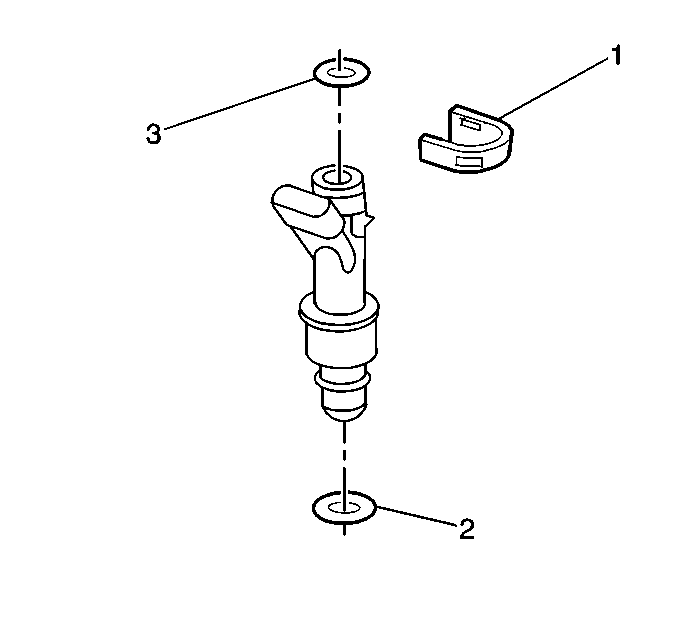Fuel Injector Replacement w/o EGR
Removal Procedure
- Relieve the fuel system pressure. Refer to Fuel Pressure Relief .
- Disconnect the negative battery cable.
- Remove the fuel rail assembly. Refer to Fuel Injection Fuel Rail Assembly Replacement .
- Remove the fuel injector retaining clip (1).
- Remove the fuel injector.

Caution: Remove the fuel tank cap and relieve the fuel system pressure before servicing the fuel system in order to reduce the risk of personal injury. After you relieve the fuel system pressure, a small amount of fuel may be released when servicing the fuel lines, the fuel injection pump, or the connections. In order to reduce the risk of personal injury, cover the fuel system components with a shop towel before disconnection. This will catch any fuel that may leak out. Place the towel in an approved container when the disconnection is complete.
Caution: Unless directed otherwise, the ignition and start switch must be in the OFF or LOCK position, and all electrical loads must be OFF before servicing any electrical component. Disconnect the negative battery cable to prevent an electrical spark should a tool or equipment come in contact with an exposed electrical terminal. Failure to follow these precautions may result in personal injury and/or damage to the vehicle or its components.
Important: If the fuel injector is difficult to remove from the fuel rail assembly, use the J 43013 Multec II Injector Removal Tool.
Important: Visually inspect the fuel injector in order to determine if the upper O-ring was also removed. If the upper O-ring is not removed, remove the O-ring from the fuel rail assembly.
Installation Procedure
- Lubricate the new fuel injector O-ring seals (2,3) with clean engine oil, and install the seals on the fuel rail assembly .
- Install the fuel injector upper O-ring (3).
- Install the fuel injector lower O-ring (2).
- Install the fuel injector to the fuel rail assembly.
- Install the fuel injector retaining clip (1).
- Install the fuel rail assembly. Refer to Fuel Injection Fuel Rail Assembly Replacement .
- Reconnect the negative battery cable.
- Use the following procedure in order to inspect for fuel leaks:

Important: Each fuel injector is calibrated for a specific flow rate. When replacing the fuel injectors, be sure to order the correct fuel injector for the application.
Important: When installing the fuel injector, care should be taken not to tear or misalign the fuel injector O-rings.
| 8.1. | Turn on the ignition for 2 seconds, leaving the engine off . |
| 8.2. | Turn off the ignition for 10 seconds. |
| 8.3. | Turn on the ignition, leaving the engine off. |
| 8.4. | Inspect for fuel leaks. |
